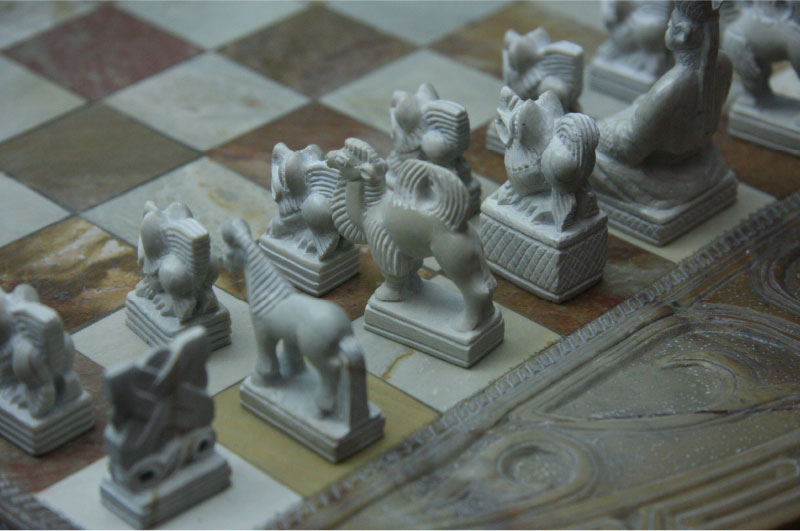Tuvan chess is a unique example of fine plastic art

A two-humped camel, Garuda the half-bird-half-human, rabbits, dogs, and rams all replace traditional pieces in Tuvan chess, which is renowned for its beauty and detail. These pieces all reflect the myths, history, and culture of the Tuvan nation.
Arts and crafts of Tuva are interesting and original. Small sculptures occupy a special place in it. Tuvans did not have equipped workshops, as they were a nomadic nation and therefore their sculptures did not exceed 20 centimeters in height. It is in such small forms that wood and stone carvers achieved great skills.
Chess came to Tuva from Mongolia in the sixteenth or the seventeenth century. A famous traveler, the first woman to become a member of the Russian Geographical Society, Alexandra Potanina wrote about Tuvans in: «Their favorite pastime is playing chess». The geographer, traveler and zoologist Grigory Grumm-Grzhimailo admired the art of Tuvan masters who created chess: “Thanks to the special casting techniques, there are no stereotyped objects here at all … they are distinguished by their truthfulness compositions and a kind of artistic performance”.
The main materials from which the chess pieces were made were agalmatolite and serpentinite. These relatively soft stones perfectly convey the volume and shape of the object. There were also chess pieces carved from the bones and horns of large animals.
Not only is the technology of making Tuvan chess interesting, but also the images conveyed in the figures. The queen that we are accustomed to appears in the form of the mythical animal arzylan. Tuvans believe that it is a symbol of power and strength. The bactrian camel is associated with endurance. The figure of the horse appears before us on four legs. The half-bird-half-human Garuda, a symbol of happiness, replaces the traditional rook. The chess king is the ruler of Tuva noyyan or noyon, the head of one or several tribal groups. He is depicted as a man sitting on the ground, wearing a national robe and a headdress — a pointed hat topped with a ball and a feather. With all his appearance noyan expresses calmness, wisdom and peacefulness. He never has a weapon in his hands. Black and white kings in Tuvan chess, as a rule, differ not only in color. One of them may be a representative of secular power, and the other — of the spiritual one.
The art of creating Tuvan chess is still developing today. Among the most famous masters of this unique folk craft, it is worth noting Ondar Dorzhu and Vladimir Arakchaa, well-known far beyond Tuva.
Eugenia Gurevich
